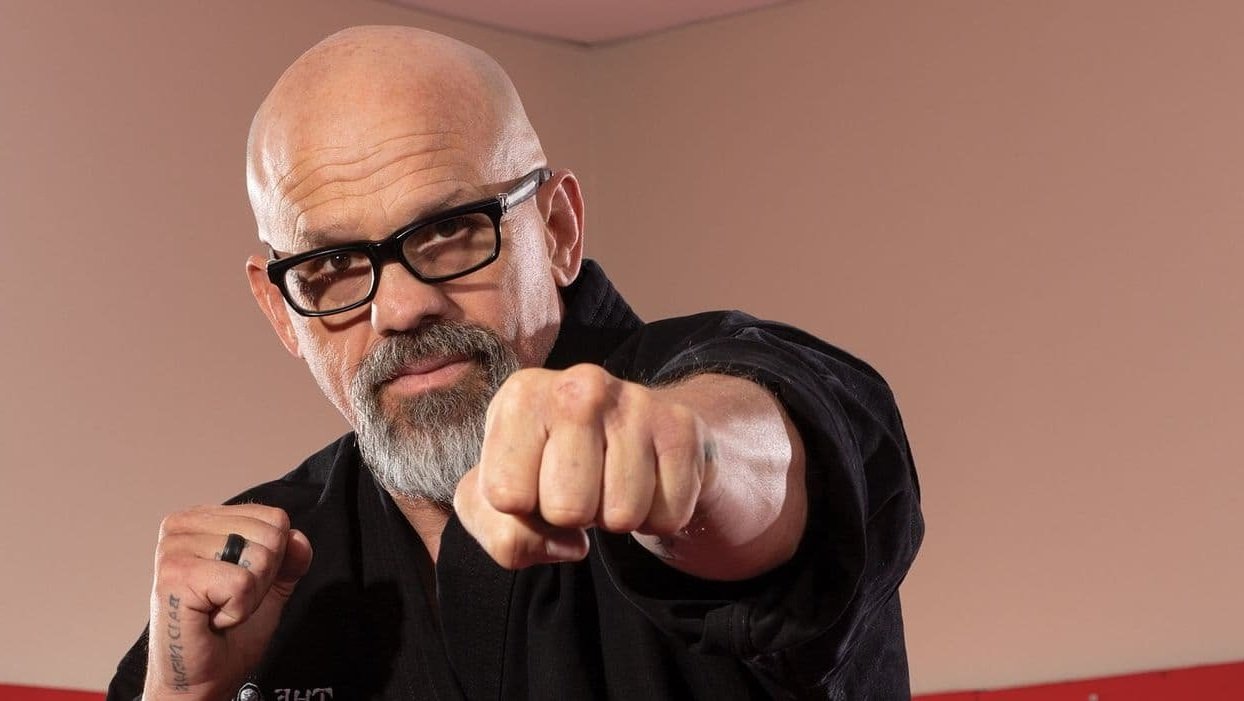
Conversations with a Backfist!
Social Gelo with Angelo Podcast
245-The Halbuna Legacy: How Kajukenbo Reached the Mainland | Ilona Halbuna Interview
In this episode of Social Gelo with Angelo, I sit down with Ilona Halbuna — daughter of Senior Grand Master Joe Halbuna — to talk about her father’s incredible legacy in Kajukenbo and how he helped bring the art from Hawai‘i to the mainland United States. We dive into: • The history of the Halbuna lineage • SGM Joe Halbuna’s role in spreading Kajukenbo • Family memories and training stories • The evolution of Kajukenbo over the years If you’re a martial artist, especially in Kajukenbo, this is a powerful conversation about preserving lineage, honoring our roots, and understanding the pioneers who shaped the art we train today. 👊🏽 Subscribe for more martial arts history, interviews, and training insights!
244- Kajukenbo Reality Check: What Happened to Jiu Jitsu?
In this episode of Social Gelo with Angelo, I sit down with Taybren Lee — a judo black belt, BJJ black belt, grappling coach, and JJIF-affiliated instructor with deep experience in both traditional and modern Jiu-Jitsu — to break down how Brazilian Jiu-Jitsu has changed over the decades. What started as a conversation about why it took me 18 years to get my brown belt turned into a deep dive into the entire evolution of the art. I also share how I see all of this from my Kajukenbo perspective, since I came up in a system that blends striking, grappling, and self-defense. We get into: 🥋 Why practitioners used to stay at the same belt for 10–20 years ⛔ Old-school rules that didn’t allow coaching unless you were a black belt ⚔️ How people now coach after one year — good or bad? 🧠 How Jiu-Jitsu shifted from a fighting art to a sport-focused system 🤼 The underplayed influence of catch wrestling on early Brazilian Jiu-Jitsu 🕵️ Some of the lesser-known parts of BJJ’s early history 📜 Carlos Gracie’s controversial role and the politics behind the scenes If you're into BJJ, martial arts history, or you’ve ever wondered what really happened to Jiu-Jitsu, this episode goes deep into topics most people don’t talk about.
243-What's up with East Coast Kajukenbo?
In this episode, I sit down with two East Coast Kajukenbo black belts, Andy Hansen and Tom Campbell, and we break down how their martial arts backgrounds connect back into the Kajukenbo family tree. Both of these guys come from the lineages that trace through Karazenpo, Shaolin Kempo, Fred Villari, and the United Studios of Self-Defense (USSD) era. They explain how Kajukenbo made its way from the West Coast to the East Coast, how different branches evolved, and how certain instructors claimed to go to China and return as “Kung Fu masters.” We talk about what’s real, what’s questionable, and ultimately—what does any of that really mean for you as a martial artist? Tom Campbell also shares his experience as a former American kickboxing world champion, adding a real fighting perspective to the conversation. If you’ve ever been confused about Kempo, Kajukenbo, Shaolin Kempo, Villari’s, USSD, or how all these systems connect, this episode clears it all up. 👉 Like, subscribe, and drop a comment if you want more episodes diving into Kajukenbo history and the martial arts world.
242-Why Is Competing Important?Why Competing in Karate & Jiu-Jitsu Matters
In this episode of Social Gelo with Angelo, I sit down with Lazarus Hunter, Claude Lawson, and Miki Lopez — all seasoned coaches in boxing, Brazilian Jiu-Jitsu, and traditional martial arts — to break down one simple question: Why is competing important? We get into: 🥋 Why competition helps you grow in karate, jiu-jitsu, and striking arts 💪 How to keep competing as you get older without burning out 🤕 What to do if you're injured but still want to stay involved in the martial arts community 🔥 The mental side of competition — confidence, fear, ego, discipline 👊 The difference between training hard and training to compete Whether you're a beginner thinking about your first tournament or a veteran deciding if you should get back on the mats, this conversation breaks down the real reasons competition matters — and why it’s not just about winning medals. If you enjoy conversations about martial arts, coaching, training longevity, and real-life fight wisdom, hit that LIKE, SUBSCRIBE, and SHARE the episode.
241-Old School Karate vs New School Karate
Old-School Karate vs. New-School Karate I sit down with two martial artists from a different era—guys who started in the late ’70s/early ’80s—while I’m a 2000s kid. We cross-check stories and training notes to see what actually changed. We dig into karate and especially taekwondo: were they really “better back in the day,” or is that nostalgia? We talk contact level, training methods, competition culture, and how different styles evolved—what improved, what didn’t, and what people keep getting wrong. Topics: Karate & TKD then vs now (myth-busting the “better back then” claim) How training, rules, and competition shaped the arts Style differences and what actually carries over to modern practice Tell me your take in the comments—was old school really better, or just different?
240-Uncle Frank’s Untold Story:The Ordonez Kajukenbo Ohana
In this episode, I sit down with Jason Groff, the head of the Ordonez Kajukenbo Organization, to talk about one of the most overlooked figures in Kajukenbo history — Uncle Frank Ordonez. Jason opens up about Uncle Frank’s life, his deep connection to the art, and how his influence went far beyond what most history books or Kajukenbo historians give him credit for. We discuss the roots of the Ordonez Kajukenbo Ohana, the stories that rarely get told, and how Uncle Frank helped shape the structure and philosophy of Kajukenbo as we know it today. This is a rare and important look into the true legacy behind the Ordonez family and Uncle Frank’s integral role in bringing the Kajukenbo system together — a story of humility, respect, and the strength of Ohana.
239-Why your Kajukenbo/Kenpo needs Jiujitsu
🎙️ Why Your Kajukenbo / Kenpo Needs Jiu-Jitsu In this week’s episode of Social Gelo with Angelo, I sit down with Tom Theofanopoulos and Ron Baker to talk about why every Kajukenbo or Kenpo practitioner needs to understand Jiu-Jitsu. We break down a hard truth — a lot of people in Kajukenbo claim their system “already has Jiu-Jitsu,” but when you look closely, they really don’t. We explain why that’s the case, and why it matters more than ever in 2025. We also dive into why so many Kenpo people have an aversion to Jiu-Jitsu, where that resistance comes from, and how that mindset limits growth. Fighting isn’t just striking anymore — it’s striking and grappling. If you still think you can ignore the ground game, you’re setting yourself up to get your ass kicked in a real fight — or worse, to become an irrelevant coach while everyone else evolves. 💥 Don’t get left behind. Tune in and join the conversation.

Train with UFC Coach Hackleman—Virtually
Can’t attend in-person classes? No worries.
Join the online Pit community and get elite instruction, personalized progress, and official belt ranking. From your home to the hall of fame.
